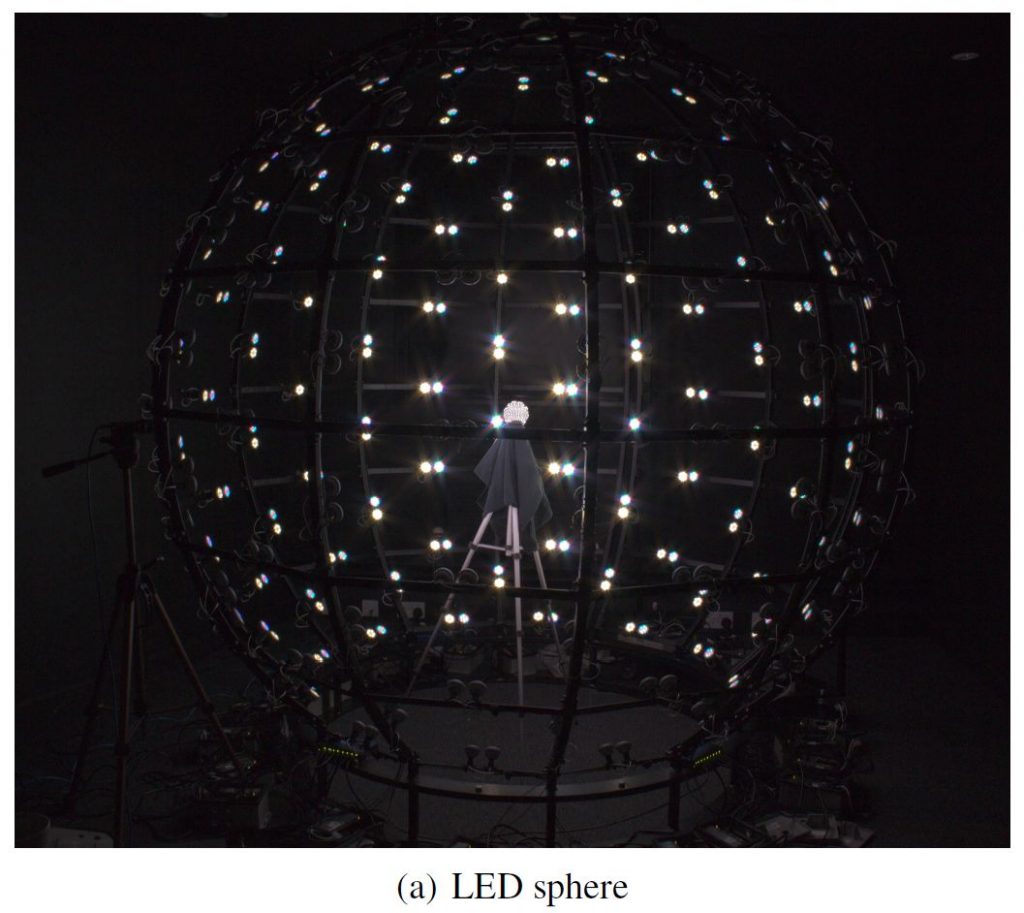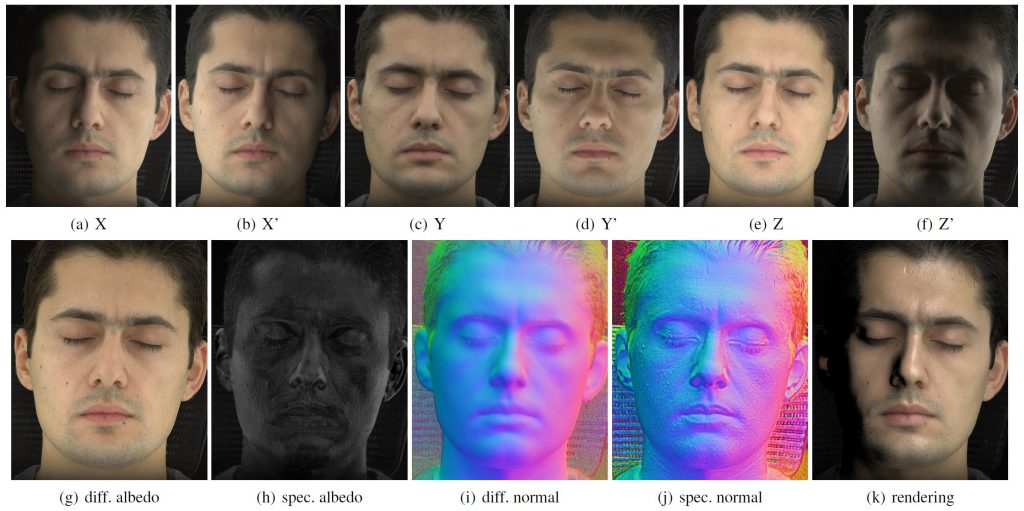Eurographics Symposium on Rendering (EGSR: EI&I) 2018
Christos Kampouris Stefanos Zafeiriou Abhijeet Ghosh
Imperial College London
Fig. 1: Acquired images of a face lit with binary spherical gradient illumination and their complements (a – f), and estimated diffuse and specular albedo (g, h) and photometric normal maps (i, j) from the acquired data which enables realistic relighting with hybrid normal rendering (k).


Fig. 2: Acquisition setup consisting of an LED sphere (a), employed for binary spherical gradient illumination as seen on a mirror ball (b – g).
Abstract: We introduce a novel method for view-independent diffuse-specular separation of albedo and photometric normals without requiring polarization using binary spherical gradient illumination. The key idea is that with binary gradient illumination, a dielectric surface oriented towards the dark hemisphere exhibits pure diffuse reflectance while a surface oriented towards the bright hemisphere exhibits both diffuse and specular reflectance. We exploit this observation to formulate diffuse-specular separation based on color-space analysis of a surface’s response to binary spherical gradients and their complements. The method does not impose restrictions on viewpoints and requires fewer photographs for multiview acquisition than polarized spherical
gradient illumination. We further demonstrate an efficient two-shot capture using spectral multiplexing of the illumination that enables diffuse-specular separation of albedo and heuristic separation of photometric normals.
Publication: Diffuse-specular separation using binary spherical gradient illumination. Christos Kampouris, Stefanos Zafeiriou, Abhijeet Ghosh. To appear in Proc. of Eurographics Symposium on Rendering (EGSR: EI&I), July 2018.


